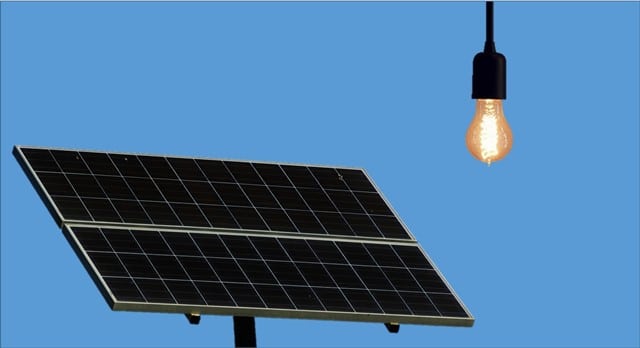
Solar panels have become a popular way to harness clean and renewable energy from the sun. However, with advancements in technology and the need for alternative energy sources, questions have arisen about whether solar panels can work with artificial light. In this article, we will explore the potential of solar panels to function with artificial light and what the future holds for this exciting field.
What are Solar Panels?
Before we delve into the topic of artificial light, let’s first define what solar panels are. A solar panel, also known as a photovoltaic (PV) panel, is a device that converts sunlight into electricity. Solar panels are made up of individual solar cells that are connected together to create a larger module. These cells are made from materials such as silicon, which are capable of absorbing photons from the sun’s rays and converting them into electrons.
How do Solar Panels Work with Artificial Light?
Artificial light sources, such as LED lights and fluorescent bulbs, emit photons that can be absorbed by solar cells, just like natural sunlight. However, the amount of electricity generated from artificial light is significantly lower than that produced from direct sunlight. This is because artificial light sources typically emit much less energy than the sun, and the photons they produce are not as energetic.
Moreover, the wavelengths of light emitted by artificial light sources are often different from those of natural sunlight. This can affect the efficiency of the solar cells, as different materials are required to absorb different wavelengths of light. For example, silicon solar cells are most efficient at absorbing light in the visible spectrum, while other materials such as gallium arsenide are better suited for absorbing light in the infrared spectrum.
Types of Artificial Light Sources
There are several types of artificial light sources that solar panels can potentially work with, including:
- LED Lights: Light Emitting Diodes (LEDs) are energy-efficient lighting sources that are commonly used in homes and businesses. LED lights emit light in a specific direction, making them ideal for use with solar panels.
- Fluorescent Lights: Fluorescent bulbs are another common type of artificial light source that can potentially work with solar panels. However, they emit light in all directions, which can make it more challenging to capture the photons with solar cells.
- Incandescent Lights: Incandescent bulbs are less energy-efficient than LED and fluorescent bulbs and emit light in all directions. However, they produce a significant amount of heat, which can be useful in certain applications, such as heating water.
- Halogen Lights: Halogen bulbs are similar to incandescent bulbs but use less energy and last longer. They emit light in all directions, making them less suitable for use with solar panels.
Applications of Solar Panels with Artificial Light
While the amount of electricity generated from artificial light is significantly lower than that produced from direct sunlight, there are still several potential applications for solar panels with artificial light. For example, indoor lighting systems could potentially be powered by solar panels and used to supplement the energy needs of a building. This could be particularly useful in areas where electricity is expensive or difficult to access.
Solar panels with artificial light could also be used in space exploration. In space, there is no natural light source, and solar panels are currently used to power satellites and other spacecraft. However, by using artificial light sources, such as LED lights, it may be possible to generate electricity on planets or moons where direct sunlight is limited or not available.
Future Developments
As technology continues to advance, it is likely that solar panels will become more efficient at generating electricity from artificial light sources. Scientists are currently researching new materials and technologies that can improve the efficiency of solar cells, including those used for artificial light.
One promising area of research is the use of perov
skite materials in solar cells. Perovskite is a mineral with a unique crystal structure that can absorb a wider range of wavelengths than silicon, making it more efficient at generating electricity from both natural and artificial light sources. While perovskite solar cells are still in the early stages of development, they have shown great promise in the laboratory and could potentially revolutionize the field of solar energy.
Another potential development in the field of solar panels with artificial light is the use of concentrated photovoltaics (CPV). CPV systems use mirrors or lenses to concentrate sunlight onto a small area of solar cells, increasing their efficiency. While CPV systems have primarily been used with direct sunlight, there is ongoing research into adapting them for use with artificial light sources, such as LED lights.
Conclusion
In conclusion, while solar panels can generate electricity from artificial light sources, the amount of energy produced is significantly lower than that produced from direct sunlight. However, there are still several potential applications for solar panels with artificial light, including indoor lighting systems and space exploration. As technology continues to advance, it is likely that solar panels will become more efficient at generating electricity from artificial light, opening up new possibilities for renewable energy. With ongoing research into new materials and technologies, the future of solar energy looks bright.
